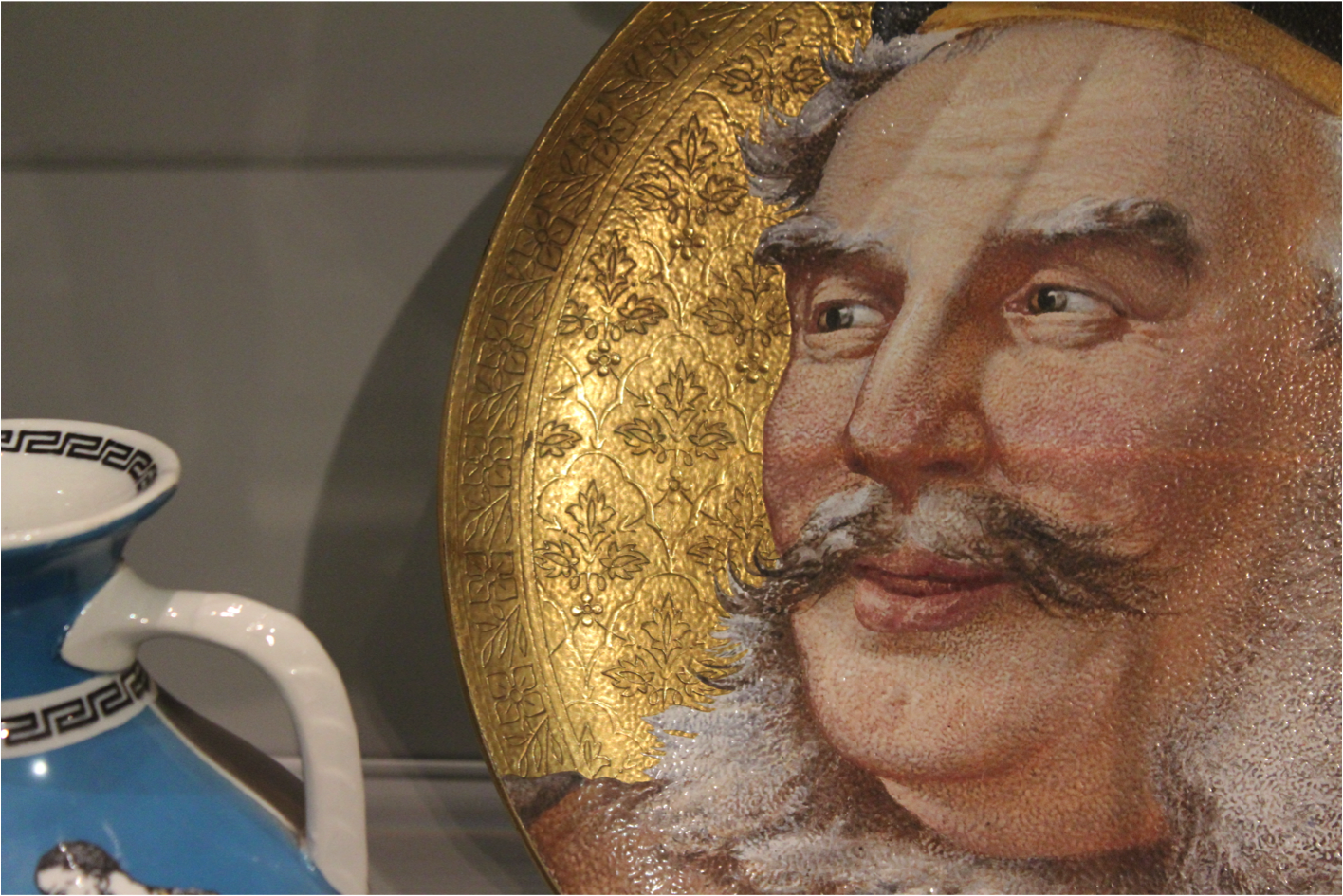Surface Deep: Considering Decoration Across Materials
Taking the red-eye from Philadelphia to London, we landed in England around 7:00 am. By 9:00 that morning we were walking through the rain on a tour of the city. In order to adjust quickly to the time change, we stayed busy the whole day, following our walking tour with a visit to the Victoria and Albert Museum after lunch. Despite my eagerness to take in their wonderful, vast collections, jetlag began to set in and I got lost in the maze-like galleries. In my wandering, I came across a piano, designed by Edward Burne-Jones, and I was struck by how much the raised surface decoration on the side resembled embroidery, similar to that seen on an evening coat also in the V & A collection. Making these connections between objects provides a wider field of understanding beyond individual objects themselves.
Grand Piano, 1883-1885, Edward Burne-Jones.Oak, stained and decorated with gold and silver gesso. Decorated by Kate Faulkner, manufactured by John Broadwood & Sons. Burne-Jones based the design on the case and stand of a harpsichord. His piano formed part of the lavish refurbishment of 1 Holland Park commissioned by Alexander Ionides, brother of C.A. Ionides. The house was decorated by Morris & Co., the firm established by William Morris, and became a showpiece of advanced artistic taste.
Evening coat, Marshall & Snelgrove, 1895-1900, London (Oxford Street), Velvet embroidered with silk thread and wool felt. Given by Mrs A. Poliakoff. Museum no. T.49-1962
I joined the material culture fellows on the English Design History course from the Winterthur/University of Delaware Program in Art Conservation, where I am a furniture and wooden artifacts major in my second year. In such a material science based program, it is easy to get caught up in our major field of study, and forget about the context from which the objects came. The curriculum of the English Design History course was instrumental in opening my eyes to design and decoration that is preserved over space and time and to historical context. Following the moment of recognition with the piano, I began to particularly notice surface decoration on objects we encountered. Once I started looking, I began to notice similarities in surface decoration everywhere.
The top of the V&A grand piano shows contrasting silver and gold gesso decoration on a dark stained wood; similar features can be seen on Asian lacquered chests in the Wallace collection, hand-painted tiles at the Jackfield Tile Museum, and on a tankard from the Wellby Collection of European Silver at the Ashmolean Museum.
 Detail of Grand Piano lid from the V&A Museum
Detail of Grand Piano lid from the V&A Museum
Detail of lacquered chest from Wallace Collection

Transfer-printed and hand-painted tile panel, Minton. “Astonishingly beautiful and would be spectacular in a dark room, entirely candle lit with a number of mirrors!! I feel these are by Dresser. He had a super eye for the spectacular.” John Scott 2013- Jackfield Tile Museum
Tankard, silver-gilt, niello, 1690, Moscow. WA2013.1.274 Wellby Collection, Ashmolean Museum.
I found the same monochrome raised design on an early 19th century throne in the V&A collection on a plate from the World of Wedgewood, an arts and crafts firescreen at Christopher Claxton Stevens’ home, on a 1920’s dress in an exhibit at the Museum of London, and in plasterwork on the ceiling at Polesden Lacey.

Detail of Maharajah’s throne, V&A. Throne Chair, Lahore, 1820-30, Hafiz Muhammad Multani (maker), Museum number 2518 (IS).
Detail of plaque from World of Wedgewood. Sir John Falstaff Plaque, 1881, Cream-colored earthenware, clear glaze, hand painted, Accession number 4498.
American walnut and repousse brass firescreen with original silk backing by Keswick School of Industrial Art c. 1895, Christopher Claxton Stevens’ house
Silk crepe dress with glass beads, 1925, Museum of London
Ceiling detail from Polesden Lacey
On our last day in London, we went back to the V&A with University of Delaware Professor Zara Anishanslin, to discuss the Spitalfield’s silk industry from the mid 18th century. While in the galleries, she took us to a period room from the same era, to encourage us consider silk designs as they would have been seen at the time of their creation: in candlelight, with the patterns of the fabric reflecting the patterns on the walls. Discussing the silk patterns in an architecture space from the same period added dimension to our understanding of the innovative Spitalfield creations. Looking back to the grand piano from our first day in London, it’s beautiful decoration designed by Edward Burne-Jones, and decorated by Morris & Co. wallpaper designer, Kate Faulkner, was commissioned to match the Morris & Co interiors of the home. It is important to look at the original context of the piano to fully appreciate the design. Throughout our travels in England, I found objects that exemplify the overlap of design influences, and show just how much the history and context matters for each object we study.

Group with Prof. Anishanslin in the Music Room from Norfolk House (1748-1752) at the V&A Museum; Photo by Alba Campo Rosillo
 Detail of dress fabric (1752) by Anna Maria Garthwaite; photo by Alba Campo Rosillo.
Detail of dress fabric (1752) by Anna Maria Garthwaite; photo by Alba Campo Rosillo.
Image from the V&A website of the grand piano in the home of A.C. Ionides, who commissioned the piece.
By: Caite Sofield, WUDPAC Class of 2018










Leave a Reply